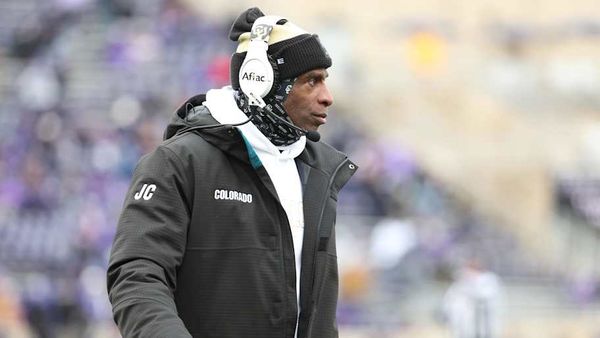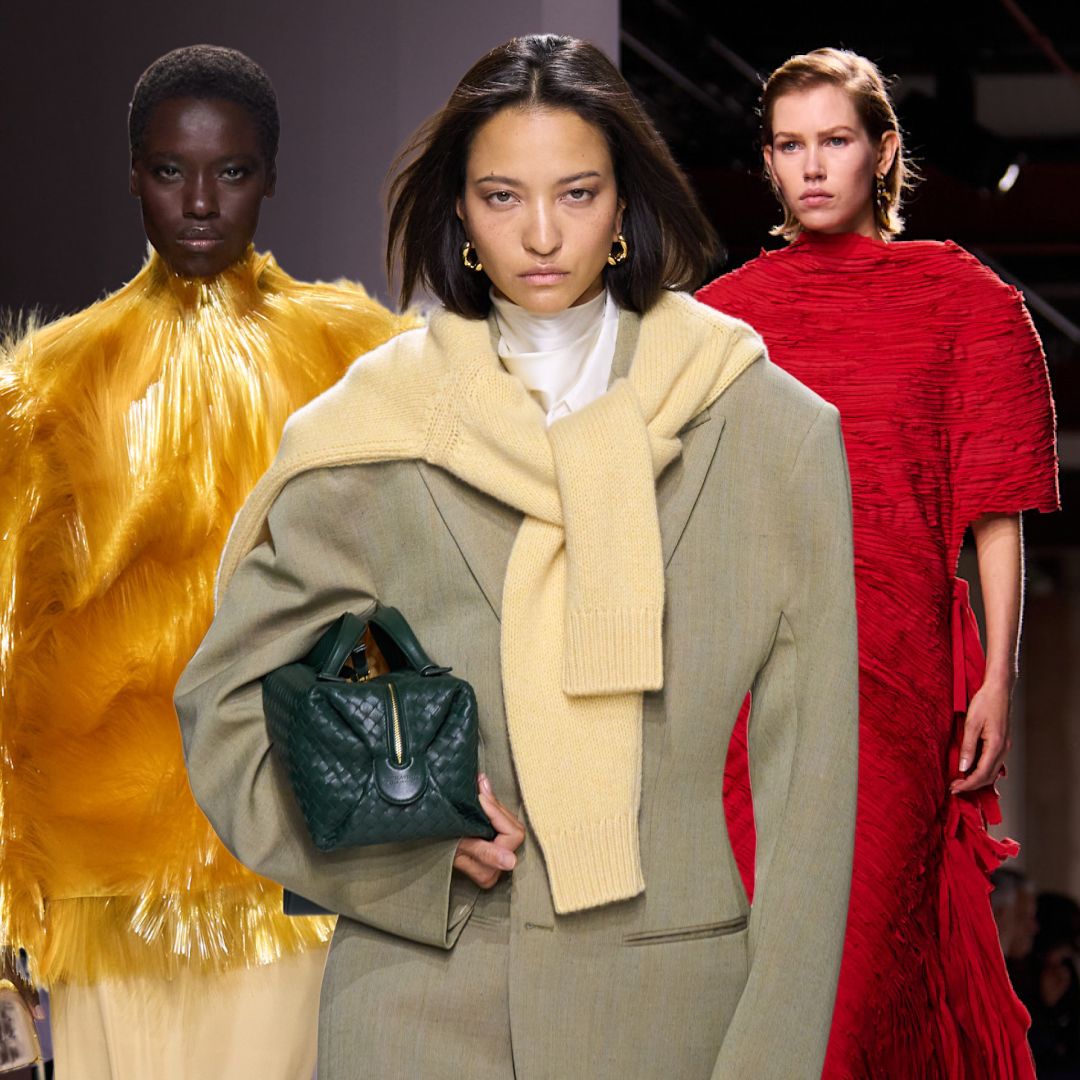
Bottega Veneta's Spring 2026 show at Milan Fashion Week was guaranteed to make history long before Louise Trotter took her final bow. The September 26 outing was her formal debut as creative director—the start of the Italian label's long-awaited era with a woman designer at the helm. It's a rarity in the label's 60-year history and in fashion overall. While this season is full of designer debuts, Trotter and Proenza Schouler's Rachel Scott are the only two who aren't men. (Yes, really.)
Not even a Devil Wears Prada stunt at Dolce & Gabbana earlier on Saturday could turn the focus away from Bottega Veneta's show later that evening. The stakes were too high; the pressure was too intense. With so few women leaders in fashion, editors, insiders, and celebrity front row guests like Julianne Moore wanted to see Trotter's premiere offering succeed. Eva Chen, Instagram Head of Fashion Partnerships, told her 1.7 million followers she only traveled to Milan Fashion Week this season to support Trotter's first collection.
A few looks into the show, it was clear: Louise Trotter's Bottega Veneta was worth the journey. Her collection managed to do what a business ultimately needs to do—set a spring trend agenda and introduce It items—while offering her singular twist on Bottega's heritage of artistry and craft.
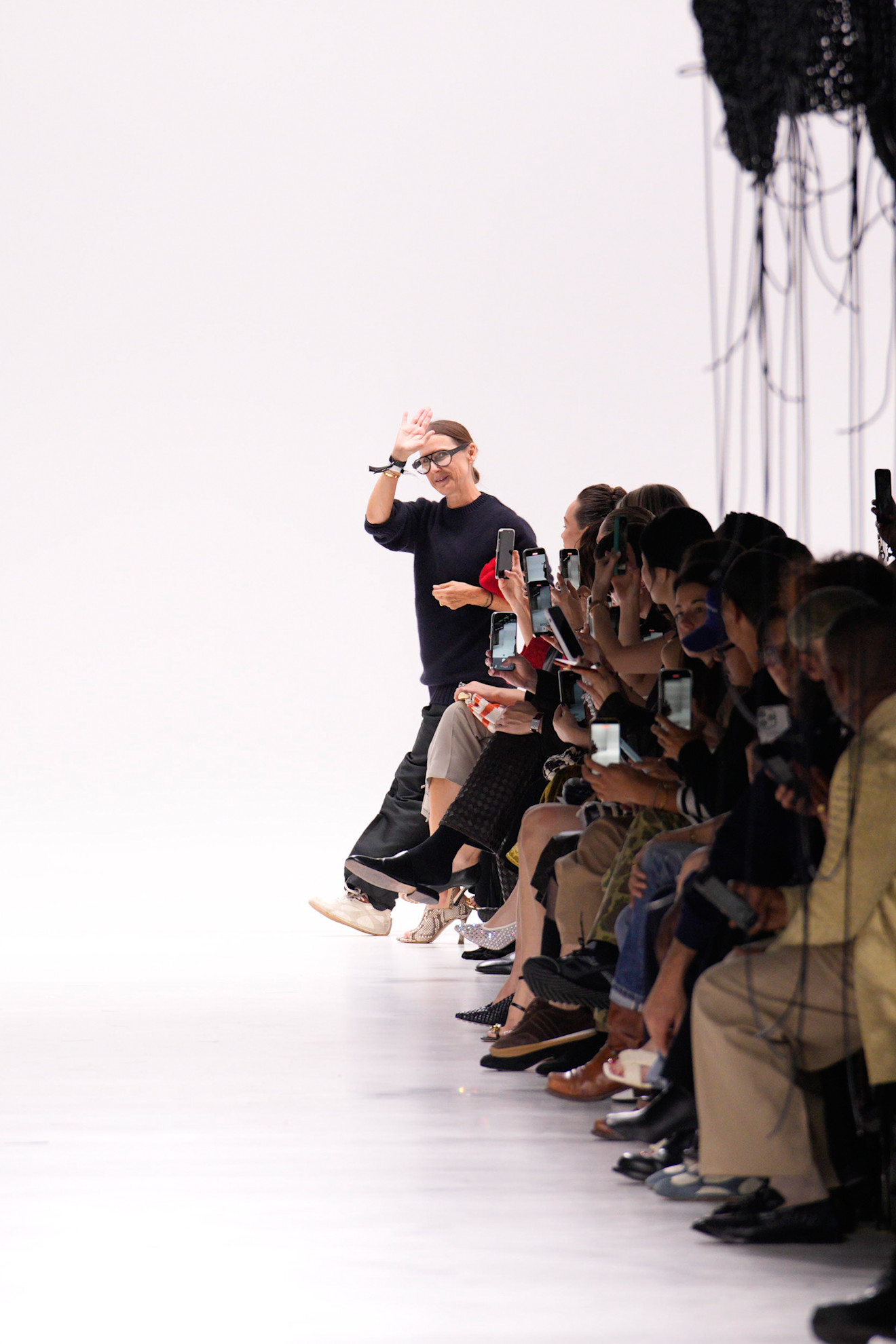
Let's start with what the casual shopper wants to know: Louise Trotter's Bottega Veneta is still very much a destination for spring handbag trends. The show invitation, a block of leather that stretched into a latticed leather book tote, was proof enough.
For the runway, she looked back on the house's relationship with well-dressed women to modify the Lauren, a woven leather style created for Lauren Hutton to carry onscreen in 1980's American Gigolo. Several models carried the clutches under their arms with defined-waist blazers and buttery leather coats, in shades of black, burgundy, and deep green. Hutton also attended the show carrying her namesake bag in red—the ultimate vote of confidence.
Alone, the bags nodded to the 50th anniversary of Bottega's signature weave. Styled into the overall show, they hinted at Trotter's respect to former creative directors Matthieu Blazy and Daniel Lee. Here, she wasn't rewriting all the Bottega house codes. Paired to appealingly oversize coats and an editor-favorite, pointed-toe clog that's destined for sold-out status, she was adding a woman's touch.
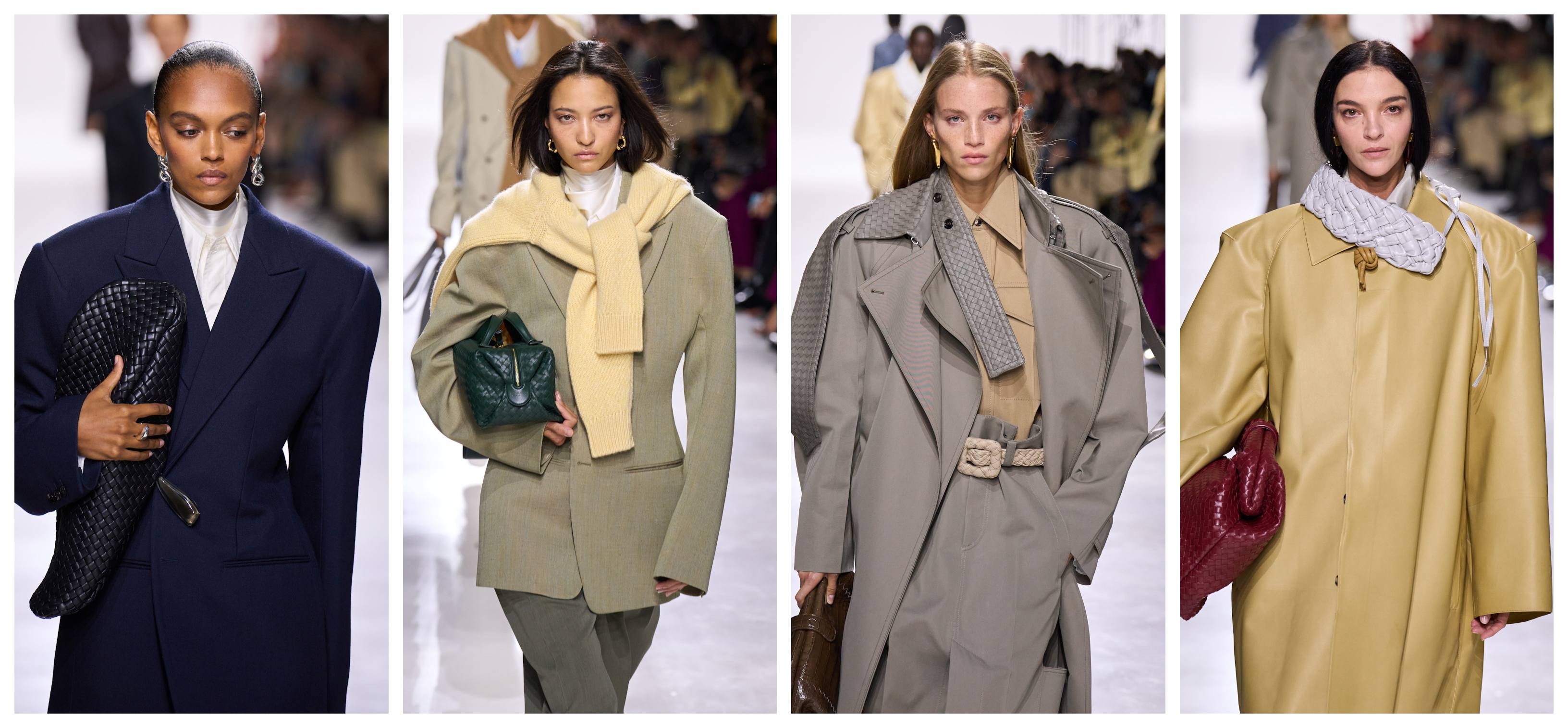
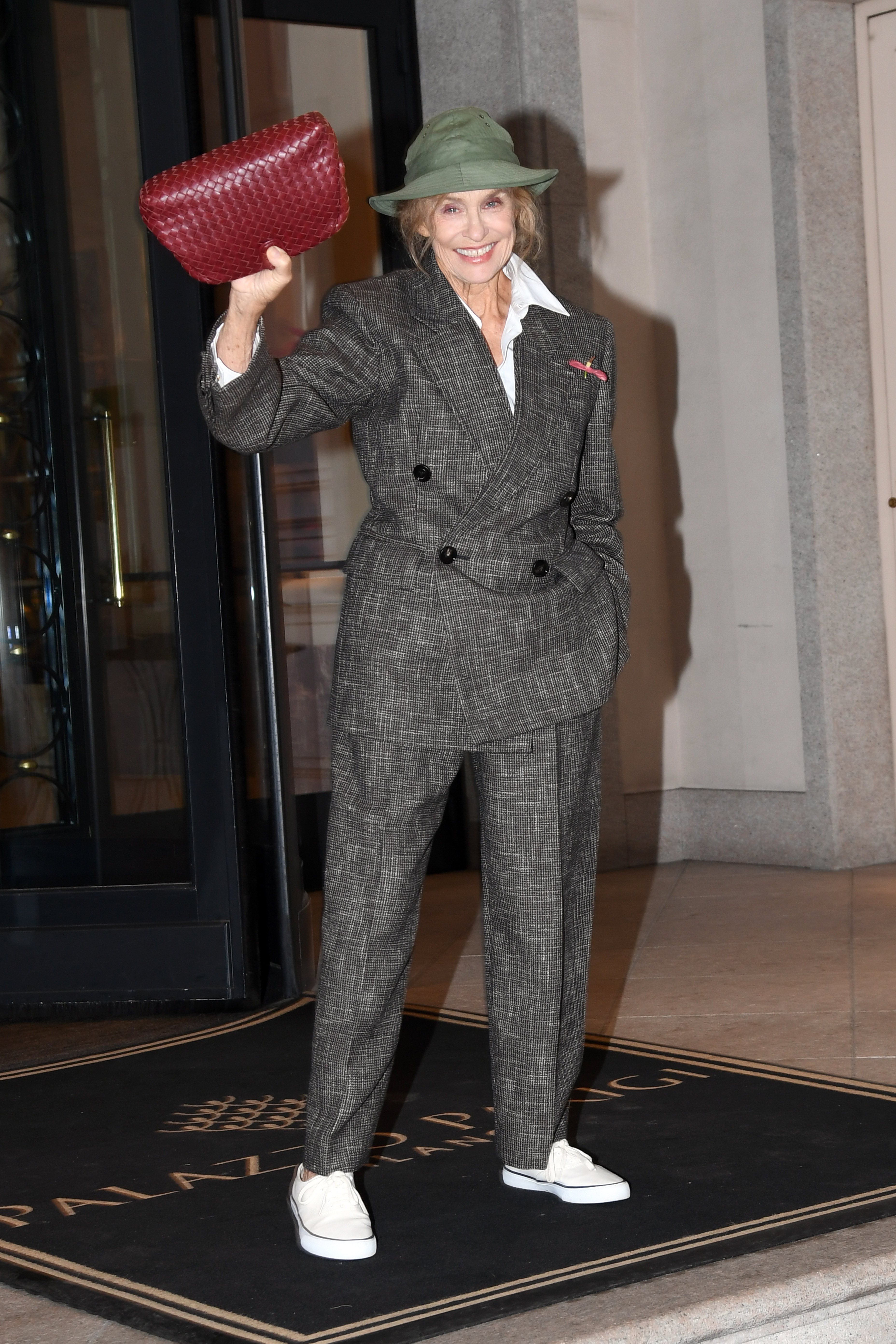
No one in the attendance at Bottega Veneta's show had permission to reach out and feel the next looks that walked by. (That's a privilege reserved for the re-see, a private post-show appointment when editors can view the looks again up close.) If guests tried petting the runway looks anyway, I couldn't blame them.
The collection became increasingly, alluringly tactile as the number of looks ascended: leathery button-up shirts came with full, feathered skirts in blends of pale blue and chartreuse or burgundy, silver, and black. A pailette-skirt undulated with obsidian and silvery-blue. The final dresses were shirred and sculpted to the body, with one hip jutting out wide to conceal a pocket. Behind-the-scenes, these looks were lessons in patience: Women's Wear Daily reports one leather cape took 4,000 hours of work by hand to complete.
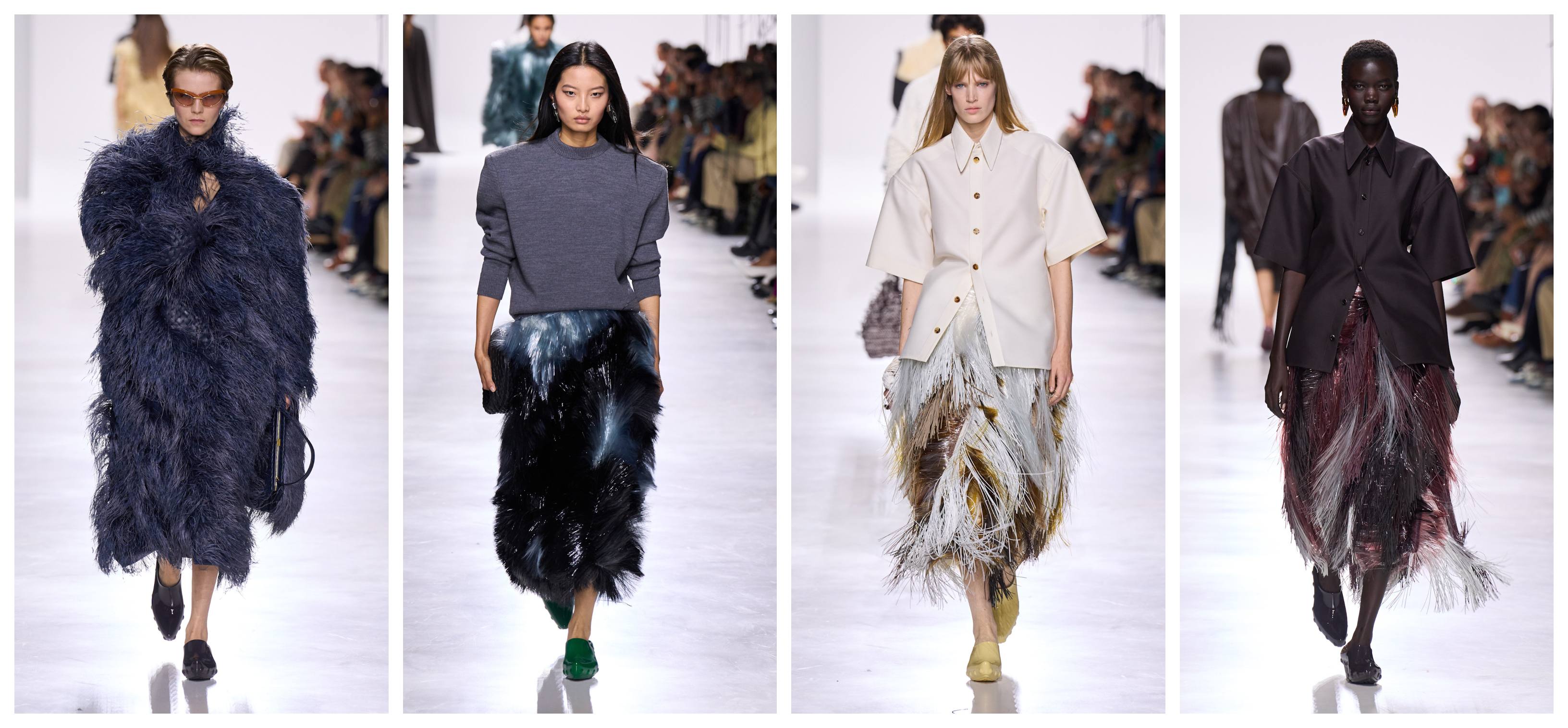
In interviews with select press, Trotter described getting familiar with the Bottega archives as "playing in a candy box." There was definitely a box of chocolate effect in her collection: if each look was a bite, it offered something unexpected compared to the last.
Collarless jackets with a sweater over the top gave way to a button-up tucked into an asymmetric leather skirt and a clutch resembling a book with golden edges. Those were followed by a navy blue feathered coat with bits of leather peeking out from beneath, plus two fiberglass fringe jackets that swayed with every step in windchime fashion. The shapes and weights of these garments weren't so exaggerated as to be unwearable. Rather, they displayed the expertise in tailoring that Trotter had honed in prior roles for Carven and Lacoste, with unconventional materials that seemed downright fun to move in. Only a designer with Trotter's résumé—and lived experience as a woman in fashion—could thread this needle so expertly.
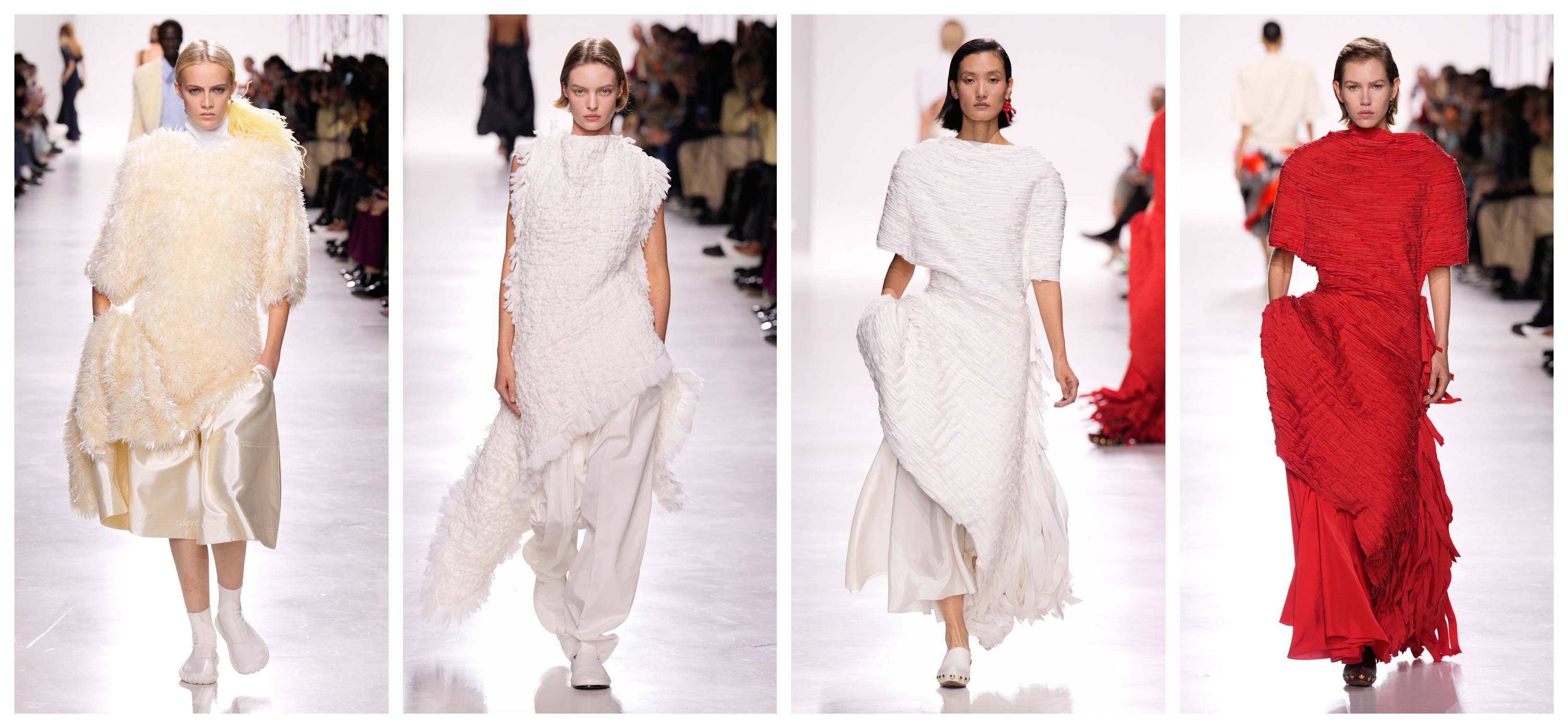
Louise Trotter's first Bottega Veneta debut looked excellent on the runway. And, within the thousands of amateur social media reviews cascading online after the show. Something tells me her collections are, still, best appreciated when they're on the body: when the wearer can stroke the intrecciato weave of her high-neck leather jacket or run her fingers through the recycled fiberglass fringe on her otherworldly coat.
All in all, it was a triumphant debut. I, like thousands of viewers around the fashion world, finished watching Trotter's runway thinking one thing: I can't wait to feel the new Bottega Veneta with my own hands.


